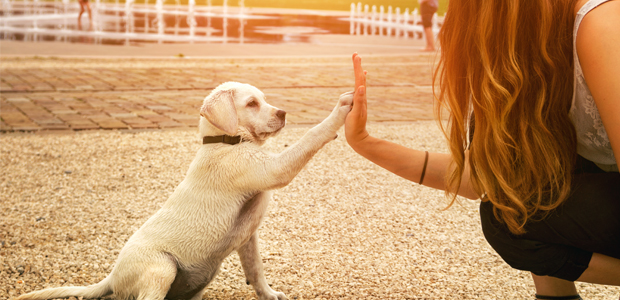How to teach your dog to high five
First Published: 03/03/2022
Last Updated: 10/02/2023
Want to impress your guests and build a bond with your pooch at the same time? Teaching your dog how to high five is the perfect way to do this.
A relatively easy trick to pick up, with a bit of training and patience, your dog will soon be a master of giving out high fives on command.
You will need:
Treats
Try some super-tasty, extra delicious treats for when your dog is learning a new command and some commonplace, run-of-the-mill treats for when you’re fine-tuning a command they know relatively well.
Time
Although no huge chunks of it… training works better when done in short, frequent sessions rather than huge half-hour blocks.
Space
Nominate one area of the house to use for training. Ideally, the space should be free of distractions and obstacles.

Teach your dog to high five, step by step
- Hold a treat in your hand a close it in your fist. Get your dog’s attention by holding the treat near their nose, they should lick or paw at your fist.
- When they paw or lick your hand, give them plenty of praise and give them the treat.
- Repeat this step 4 or 5 times, then say “high five!” when your dog starts to lift their paw.
- When your dog has mastered this, it’s time to change your fist into an open palm, so you can achieve a true high five. Without a treat in your hand, hold your hand up to your dog with your palm facing their nose.
- Say “High Five!” and praise them when they touch your hand with their paw. Reward and repeat.
And remember...
Keep it interesting
If your dog is good at learning tricks, try getting them to “high five” in different places. Once your dog is consistently high-fiving, gradually reduce how often you reward them.
Practice makes perfect
Be patient, your dog might not pick this up straight away. Always use positive reinforcement when training, never scold or shout at your dog if they’re struggling.
Need more info?
For more help on dog training, have a chat with your local vet – they’ll be able to recommend a local qualified canine behaviourist if you need one. Find your nearest vet using our Find a Vet page.
